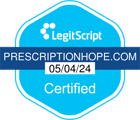
A common question when traveling is “Can I fly with my medication?” The answer to that question is yes, but there are some guidelines and things you should consider before traveling with medication.
We know that traveling with medication can be very hectic and nerve-racking. Not only are you worried about if you packed enough medication, you also have to worry about authorities and TSA when you fly.
This is why this article will cover details and tips for traveling with medication and the things you should consider.
Things to Consider Before Traveling with Medication:
- Discuss your travel plans with your prescriber and pharmacist to ensure you will have enough medication to last the duration of your trip.
- Put all your medications in a separate bag to make the process of going through security easier.
- Make sure you pack enough medication to last the duration of your trip, plus a couple days extra to stay on the safe side.
- Don’t pack your medications in your checked bag to avoid temperature issues and delays. It is also a good idea to put them in your carry-on in the event that you need immediate access.
TSA Guidelines for Traveling with Medication:
- You can bring your needed prescription medications in pill or solid form in unlimited amounts as long as it is screened.
- Medication in liquid form is allowed in carry-on bags in excess of 3.4 ounces in reasonable quantities for the flight. It is not necessary to place medically required liquids in a zip-top bag. However, you must tell the TSA officer that you have medically necessary liquids at the start of the screening checkpoint process. Medically required liquids will be subjected to additional screening that could include being asked to open the container.
- While you can travel with medication in both carry-on and checked baggage, it is highly recommended you place these items in your carry-on in the event that you need immediate access.
- TSA does not require passengers to have medications in prescription bottles, but certain states do have individual laws regarding the labeling of prescription medication with which passengers need to comply. If you are traveling with medication out of the country, we recommend you check with that country for certain prescription drug restrictions. To find out about prescription drug restrictions, call your destination country’s embassy or visit the embassy’s website.
- Medications are usually screened by X-ray; however, if a passenger does not want a medication X-rayed, he or she may ask for an inspection instead. This request must be made before any items are sent through the X-ray tunnel.
Tips For Certain Types Of Medications And Supplies:
Pill/Solid:
- You are allowed to bring all prescription and OTC medications with you while traveling, as long as they undergo screening.
Liquid/Cream/Gel/Aerosol:
- These are exempt from the 3-1-1 liquids rule, so you’re allowed to bring all prescription and OTC medications that are greater than 3.4 oz (100 mL) in your carry-on.
- Medically-required liquids like baby formula, breast milk, and liquids/gels that treat hypoglycemia are allowed but may require additional screening.
- You don’t have to include them in the resealable bag along with other liquids.
Insulin:
- This is exempt from the 3-1-1 liquids rule.
- It can safely pass through X-ray machines, but you can request hand inspection if needed.
Other:
- Ice packs, freezer packs, gel packs, and other accessories in a frozen or partially-frozen state are allowed.
- Supplies associated with medically-necessary liquids (eg, syringes, needles, lancets, pumps, IV bags) must undergo screening.
For more specific information regarding traveling and medication, please visit the Transportation Security Administration website.
In addition, if you are paying too much for your medication, be sure to fill out your application by clicking here. Prescription Hope works with over 180 pharmaceutical manufacturers to help provide you with the medication you need at a set, affordable cost .





